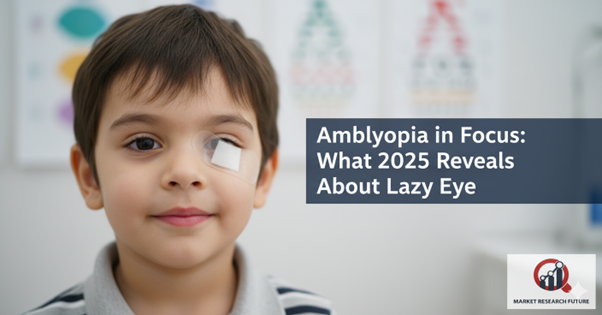Amblyopia: What does the Data Say?

What Is the Evidence for Amblyopia?
A Brief Overview of Amblyopia
A condition known as amblyopia, or lazy eye, causes one or both eyes to have impaired vision. Although it may exist from birth, it usually manifests in early childhood as a result of aberrant visual development. Reduced vision and a poorly developed visual field are the results of the condition.
The brain's incapacity to combine images from both eyes into a single, three-dimensional image is frequently the cause of amblyopia. The weaker eye becomes underdeveloped as the stronger eye gradually takes over.
The phrase "lazy eye" is frequently used, but it's not always true. There is more to the condition than just an eye being "lazy." In order to prevent double vision, the brain suppresses the image from the weaker eye, so it is actually a neurological problem.
The Misunderstood Eye
Sometimes, strabismus (squint) or other eye disorders are mistaken for amblyopia. Although amblyopia can result from strabismus, it is not always the cause of misaligned eyes. The way the brain adjusts, favoring one eye over the other, is what distinguishes amblyopia.
Since the brain is more flexible in its early years, treatment has mostly targeted children for decades. However, as of 2025, there is growing interest in investigating adult therapies as well. New developments in vision therapy, neuroplasticity research, and digital eye-training tools show promise, despite the paucity of evidence supporting adult rehabilitation.
Methods of Rehabilitation
In order to manage amblyopia, particularly in children, vision rehabilitation is essential. The most popular and tried-and-true therapies consist of:
- Occlusion Therapy: This therapy involves applying a patch to the stronger eye to make the weaker eye work.
- Vision Therapy: This therapy is an organized set of eye exercises meant to teach both eyes to cooperate.
- Corrective Lenses: Although they frequently only partially address the issue, glasses can aid in the correction of refractive errors.
Patches might not always be necessary for kids who have amblyopia in both eyes. Rather, the goal of treatment is to improve binocular vision, depth perception (stereopsis), and coordination between both eyes.
Modern Vision Therapy's Function
In the past, parents were frequently informed that there was nothing to be done if amblyopia wasn't treated right away. That belief is being questioned today. Our understanding of treatment timelines is changing as a result of developments in digital vision therapy tools and behavioral optometry. New optometric techniques, VR-based vision games, and interactive apps are expanding possibilities beyond childhood.
However, glasses by themselves are not a long-term solution. They don't retrain the brain, but they might help improve vision. For this reason, a more thorough approach is stressed by orthoptists, optometrists, and vision therapists. Multidisciplinary care, involving experts ranging from behavioral therapists to eye surgeons, is expected to become the norm by 2025.
A Way Forward for Better Vision
It's interesting to note that not all cases of untreated amblyopia cause permanent impairment. Rarely, the brain adjusts on its own, enabling one or both eyes to develop sufficient vision without the need for special care. But in the majority of cases, early intervention is necessary. Three-dimensional vision and depth perception may deteriorate irreversibly into adulthood if amblyopia is not treated.
The good news? When detected early, amblyopia is very treatable. Simple instruments include patches, eyeglasses, or exercises that are supervised by an eye specialist. Without the need for intrusive procedures or drugs, these simple treatments can frequently result in notable improvements.
The Prospects for 2025
It is no longer believed that amblyopia is an incurable childhood condition. Children and adults now have more options than ever before thanks to advancements in digital tools, modern vision therapy, and a better understanding of neuroplasticity. Parents are urged to take early action, but therapies that were previously believed to be exclusively for children are now offering hope to adults as well.
Fundamentally, treating amblyopia involves more than just "fixing an eye." The goal is to retrain the brain to perceive, process, and re-establish a connection with the three-dimensional world. Furthermore, as 2025 demonstrates, the future of amblyopia treatment is more promising and transparent than ever.

Leave a Comment